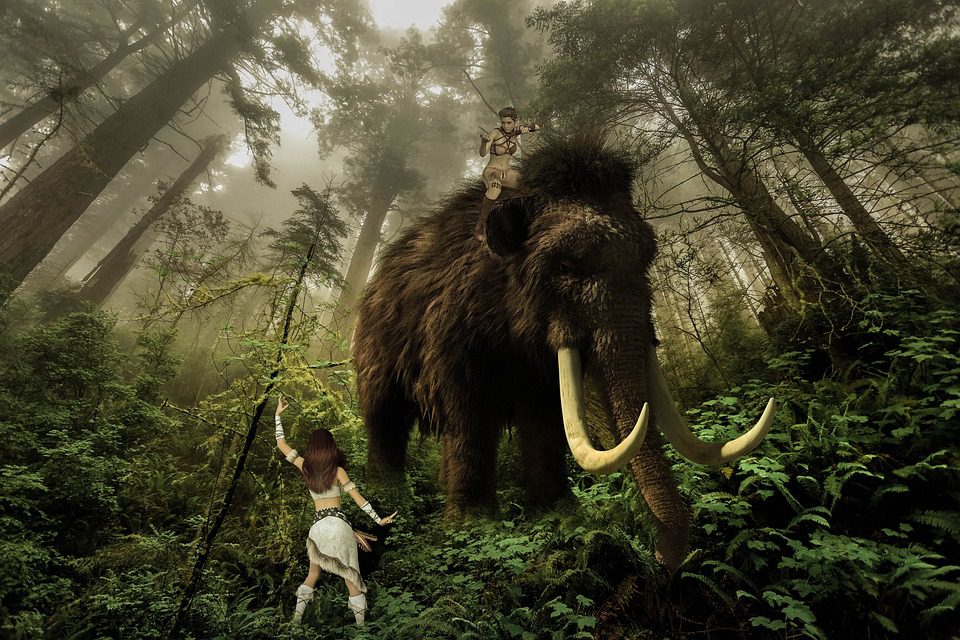A team from the University of Alberta gathered tiny pieces of permafrost sediments from gold mines in the Klondike area of central Yukon in 2010.
They had been kept frozen until paleogeneticists at the McMaster Ancient DNA Centre used modern genomics tools to comprehend better the worldwide extinction of megafauna, which dissapeared in North America 12,700 years ago.
These microscopic sediment samples contain a vast amount of old environmental DNA from countless plants and animals that lived in those habitats for millennia.
These genetic microfossils are derived from all ecosystem components, including bacteria, fungus, plants, and animals. They serve as a time capsule of long-lost ecosystems, such as the mammoth-steppe, which vanished roughly 13,000 years ago.
Since the 18th century, scientists have been debating how these ecosystems reorganized so dramatically and why giant creatures seem to have been the most harmed by this transformation.
They now utilize ambient DNA to help fill some of the gaps that have fueled these questions.
Ancient DNA, Modern Technology
Over 99.99 percent of an environmental sample comprises bacterial, fungal, and unidentified DNA.
In the given situation, the team were looking for a technique to extract the much smaller proportion of ancient plant and animal DNA that would help them comprehend the collapse of the mammoth-steppe ecosystem.
For his dissertation study, the study author worked on a team that created a novel technology for extracting, isolating, sequencing, and identifying microscopic pieces of ancient DNA from sediment.
These DNA pieces were processed to follow the changing form of plants and animals in central Yukon over the last 30,000 years.
The team discovered woolly mammoth and horse survival evidence in the Klondike area 3,000 years later than predicted.
Next, they extended research to include 21 previously obtained permafrost cores from four locations in the Klondike area, ranging in age from 4,000 to 30,000 years.
They could not only determine to which animals belonged a collection of DNA microfossils originated, but using just sediment, they could reconstruct those bits into genomes and investigate their evolutionary histories.
Extreme Environmental Change
The Pleistocene-Holocene transition, which happened about 11,700 years ago, was a time of immense global change.
This epoch witnessed the collapse of the mammoth-steppe biome and its progressive replacement with the boreal forest that we know today in eastern Beringia, the old Eurasian land bridge and unglaciated parts of Yukon and Alaska.
This resulted in the extinction of iconic ice period megaherbivores such as the woolly mammoth, Yukon horse, steppe bison, and predators like the American scimitar cat and Beringian lion, among many others.
They also saw how habitats changed with the emergence of woody shrubs approximately 13,500 years ago and how this was linked to a reduction in DNA from woolly mammoths, horses, and steppe bison.
They got to discover four important things using this vibrant information.
Along with grasses, forbs (herbaceous flowering plants) are an essential component of the mammoth-steppe ecology.
There is consistent evidence of woolly mammoth and Yukon horse survival throughout the Holocene, up to 7,000 years after their extinction from fossil records.
Comparing the Genomes of Equids Rebuilt from Sediments and Bones
An evolutionary tree based on genomes reconstructed from bones and silt shows the location and connection of horses and their cousins.
When combined with other evidence, the genetic reconstructions imply that the shift out of the last glacial epoch was more gradual than dated bones alone would suggest.
Mammoths, for example, may have dropped in local population abundance thousands of years before another megafauna, which might be linked to the earliest questioning evidence of people in the region.
Furthermore, despite the environmental change, grassland grazing animals may have survived for thousands of years in refugia (habitats that allow an isolated population to survive).
Woolly Mammoths Coexisted with Humans
Findings indicate that horses and woolly mammoths may have survived in the Klondike until about 9,000 years ago and maybe as late as 5,700 years ago, outliving their claimed extinction from local fossil records by 7,000 years.
However, old environmental DNA may survive erosion and re-deposition, potentially mixing genetic signals from multiple periods.
There was no indication of mammoth survival through the mid-Holocene until recently.
However, research has shown that mammoths lived on Arctic islands between 5,500 and 4,000 years ago.
Researchers at the Copenhagen Centre for GeoGenetics discovered evidence supporting the late survival of horses and mammoths in Alaska as recently as 7,900 years ago.
They also discovered evidence of mammoths living as late as 3,900 years ago in Siberia and woolly rhinoceros surviving as recently as 9,800 years ago.
Steppe bison, which were supposed to have vanished and been replaced by American bison during the Pleistocene epoch, have also been shown to have lived as late as 400 years ago.
They discovered unique genetic lineages of both woolly mammoths and steppe bison in the same sediment samples, suggesting that these species lived in separate populations.
A rising collection of evidence suggests that many ice-era megafaunas lived far into documented human history, roaming the north throughout the Bronze Age and while architects worked on Egypt’s pyramids.
Danish researchers discovered evidence of woolly rhinoceroses living in Siberia at least 9,800 years ago.
Our Ecological History is Preserved in Genetic Archives
The increasing complexity of environmental DNA technologies for studying ancient genetic microfossils demonstrates how much information is buried in sediments.
Permafrost is excellent for keeping ancient DNA, but as the Arctic warms, the genetic material kept there, as well as the evolutionary riddles it previously housed, will melt and decay.
Paleogenetic advances continue to push the frontiers of what was previously considered science fiction.
Who knows what unknown evolutionary knowledge is still preserved in ordinary sediments, locked in ancient DNA microfossils?
